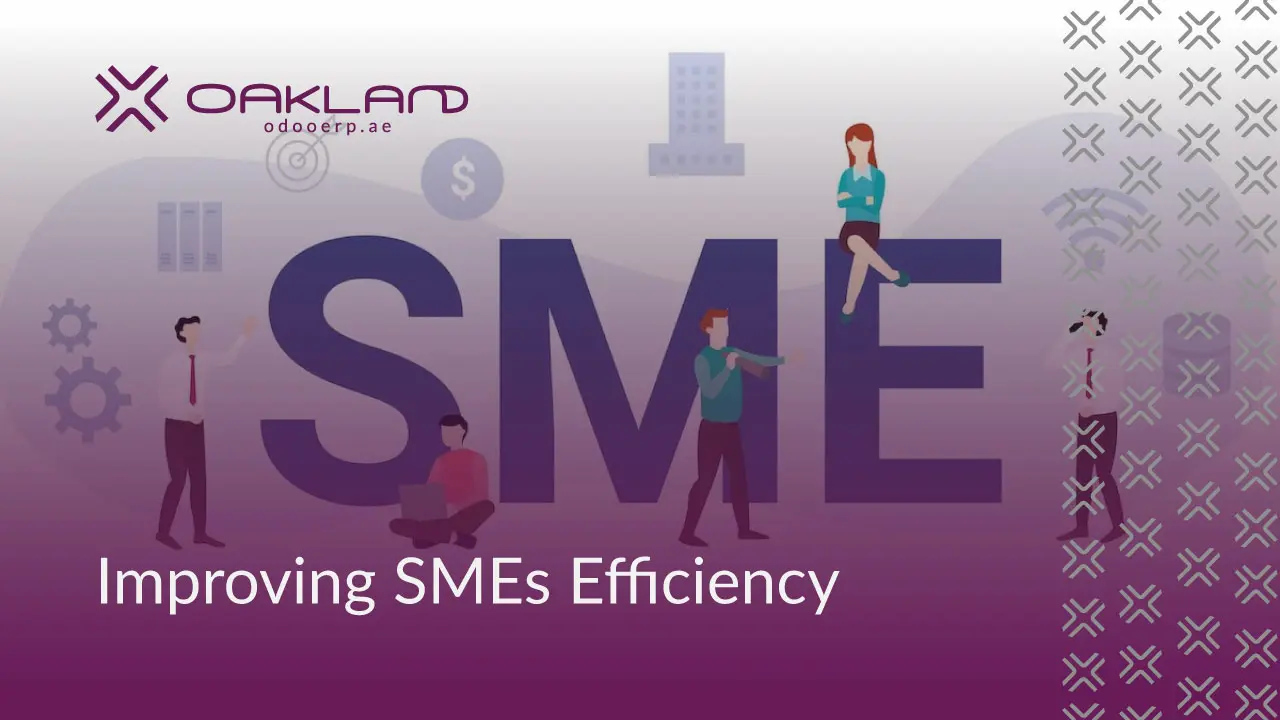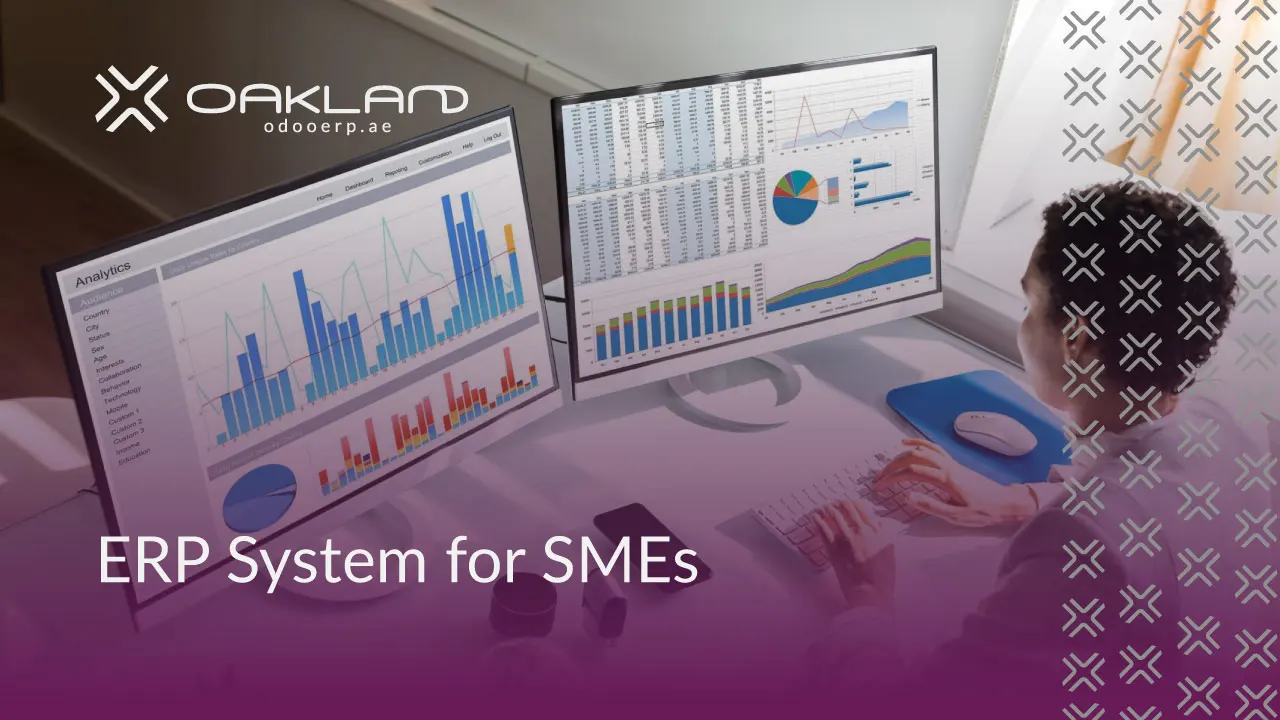SMEs always looks for new ways to boost their efficiency. We are here to make it easier for you with a direct list.
Streamline Business Operations
Efficient business operations are the backbone of any successful SME. By optimizing workflows, you can save valuable time and reduce costs. Odoo offers several tools that can streamline your daily processes, making your operations smoother and more efficient.
Automation of Repetitive Tasks
Manual tasks like data entry, sending invoices, and following up on customer payments can drain your team’s time. Odoo’s automation tools allow you to automate these repetitive tasks, minimizing human error and freeing up your staff to focus on more strategic work.
For example, automated invoicing ensures that bills are sent on time without manual input, improving cash flow and reducing the risk of missed payments.
Integration of Business Processes
Many SMEs suffer from disconnected systems that create data silos between departments. By integrating all your key processes—such as CRM, sales, and accounting—within the Odoo platform, you eliminate the need for multiple software solutions.
This seamless integration ensures that data flows effortlessly between departments, reducing delays and improving communication across the board.
Centralized Data Management
Effective decision-making relies on having access to real-time, accurate data. Using Odoo’s centralized data management system, all your business data—customer information, inventory, financials—can be stored in one secure location.
This enables quick access to insights, helping managers make informed decisions on the spot. Furthermore, centralized data reduces the risk of discrepancies, ensuring that all departments work from the same information set.
By adopting Odoo’s business tools, SMEs can dramatically improve operational efficiency, enabling them to scale and grow sustainably.
Enhance Employee Productivity
A productive workforce is essential for the growth and success of any SME. By empowering employees with the right tools, you can improve focus, collaboration, and efficiency. Odoo offers several features designed to help employees prioritize tasks, monitor performance, and work together more effectively.
Task Prioritization Tools
When employees know exactly what to focus on, productivity naturally increases. Odoo’s project management tools allow managers to assign tasks, set priorities, and create timelines.
This ensures that employees work on the most critical tasks first. For example, Odoo’s kanban board provides a visual overview of ongoing projects, helping team members stay on top of deadlines and avoid bottlenecks.
Performance Tracking and Reporting
Monitoring employee performance is key to identifying areas of improvement. Odoo’s reporting tools give managers real-time insights into each employee’s productivity, from project completion rates to time spent on specific tasks.
This data allows you to pinpoint inefficiencies and offer targeted support to boost overall team performance. With these reports, SMEs can make data-driven decisions to optimize workforce output.
Collaboration Features
Effective teamwork leads to faster project completion and improved outcomes. Odoo’s communication features, including built-in chat and document sharing, foster collaboration by allowing employees to communicate seamlessly within the platform.
Teams can share files, ask questions, and provide updates without switching between tools. This kind of real-time communication reduces delays, enhances workflow, and improves the speed at which teams accomplish their goals.
By using Odoo’s productivity and collaboration tools, SMEs can enhance employee performance, allowing them to achieve more in less time.
Improve Customer Relationship Management (CRM)
Customer satisfaction is the lifeblood of any SME. Building strong relationships and maintaining consistent communication with your customers can lead to repeat business and increased loyalty.
Odoo CRM offers a suite of tools designed to help SMEs manage customer interactions effectively and ensure no opportunities are missed.
Automated Customer Follow-ups
Keeping track of every customer interaction manually can lead to missed opportunities. Odoo CRM simplifies this by automating customer follow-ups. Once a sales activity or communication is logged, the system can schedule the next action automatically—whether it’s sending an email, scheduling a call, or reminding you to check in with a client. This automation ensures that your team never forgets to follow up, increasing the chances of closing deals and maintaining strong customer relationships.
Customer Data Centralization
When customer information is scattered across spreadsheets or different systems, it’s difficult to provide personalized service. Odoo CRM centralizes all customer data in one place, giving your team instant access to crucial information, such as previous interactions, purchase history, and preferences. Having all this data at your fingertips allows your SME to tailor services to individual customers, leading to better customer satisfaction and loyalty.
Lead Management Optimization
Managing leads efficiently is vital for growing your business. Odoo CRM provides a structured way to handle leads by automating lead scoring, assigning tasks, and prioritizing high-potential prospects. With Odoo’s lead management tools, sales teams can easily track where each lead is in the pipeline, follow up at the right time, and convert more leads into paying customers.
Using Odoo CRM, SMEs can improve customer relationships, optimize lead management, and ensure that every client receives timely, personalized service, resulting in better sales and customer retention.
Optimize Financial Management
Financial management is a critical aspect of running a successful SME. Proper tracking of expenses, timely invoicing, and insightful financial reporting can significantly improve your business’s cash flow and profitability.
Odoo offers comprehensive financial tools that simplify these processes, allowing SMEs to maintain healthy finances.
Automated Invoicing and Payments
Manually creating and sending invoices can be time-consuming and prone to errors. Odoo’s automated invoicing feature solves this by allowing businesses to generate invoices automatically based on sales orders, contracts, or subscription services.
This ensures invoices are sent promptly, and customers can make payments through integrated online payment gateways. As a result, businesses improve cash flow and reduce the time spent chasing late payments.
Expense Tracking
Keeping track of business expenses is essential for controlling costs and maintaining profitability. Odoo’s expense module allows SMEs to easily track, categorize, and approve employee expenses in real-time.
Employees can upload receipts through the mobile app, while managers can approve expenses with just a click. This ensures that your business has a clear overview of expenditures, helping you avoid overspending and stay within budget.
Financial Reporting and Analysis
Informed decision-making relies on having access to accurate financial data. Odoo’s financial reporting tools provide businesses with detailed insights into cash flow, profit margins, and overall financial health.
With customizable reports, SMEs can analyze their financial performance and forecast future trends. These insights enable businesses to make strategic adjustments, whether it’s reducing unnecessary costs or identifying new growth opportunities.
By utilizing Odoo’s financial management tools, SMEs can automate essential tasks, keep expenses under control, and make data-driven financial decisions that drive growth and stability.
Utilize Data for Strategic Decision-Making
In today’s competitive business environment, making informed, data-driven decisions is crucial for the success of any SME. By leveraging Odoo’s data analytics tools, small businesses can gather valuable insights and predict future trends, helping them stay ahead of the competition and optimize their operations.
Business Intelligence Tools
Data is only valuable when it can be turned into actionable insights. Odoo’s business intelligence (BI) tools allow SMEs to analyze large volumes of data from various departments, such as sales, marketing, and finance.
These tools help businesses identify performance trends, track KPIs, and understand customer behavior. With these insights, SMEs can make strategic decisions that improve efficiency, customer satisfaction, and profitability.
Customizable Dashboards
A clear and organized view of critical data is essential for fast decision-making. Odoo’s customizable dashboards enable businesses to create personalized views of their most important metrics.
Whether it’s tracking sales performance, monitoring expenses, or analyzing employee productivity, dashboards provide a quick, real-time overview of your business’s health. Having this information at your fingertips allows managers to take immediate actions based on current data.
Predictive Analytics
Planning for the future is easier with the right tools. Odoo’s predictive analytics feature uses historical data to forecast future trends, such as sales growth, demand for products, or market changes.
SMEs can use these predictions to make better inventory decisions, prepare for busy seasons, or anticipate potential risks. Predictive analytics provides businesses with a competitive edge by helping them stay proactive rather than reactive.
Looking to streamline your SME? We’ve got the best solutions to make it easier for you. Oakland-OdooERP is your perfect partner to achieve that efficiency boost. Our expertise in Odoo implementation can streamline your operations and unlock new levels of growth.

